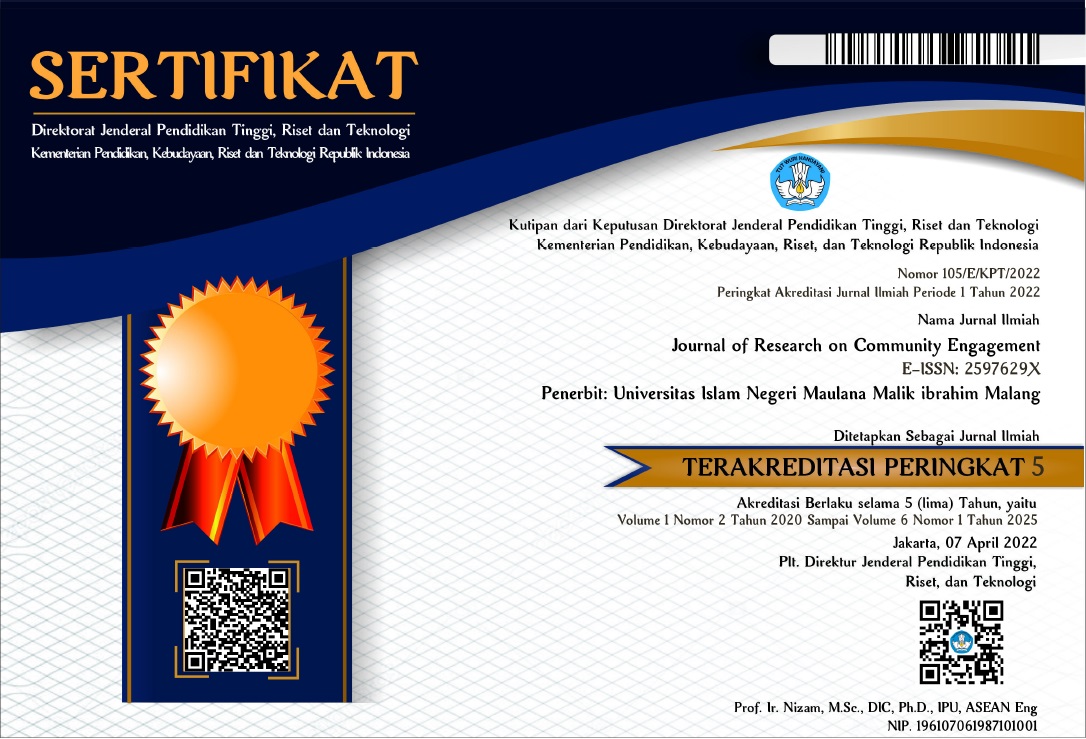Perencanaan Pengadaan Sanitasi Lingkungan di Taman Nasional Bromo Tengger Semeru dengan Pendekatan Sanitasi Total Berbasis Masyarakat
Abstract
Bromo Tengger Semeru National Park (TNBTS) is one of Indonesia’s premier tourist destinations, experiencing surging visitor numbers each year. During peak hours—especially early morning for sunrise—tourists flock to popular spots such as Penanjakan, Seruni, Mentingen, Kingkong, and Bukit Cinta, often causing long queues at toilet facilities. This community service program aimed to (1) identify sanitation needs in critical TNBTS locations, (2) propose additional sanitation facilities where required, and (3) conduct community mentoring to ensure sustainable involvement in facility planning and management. The methods included field surveys, queueing analysis, visitor forecasting, water requirement and cost calculations, and a Community-Based Total Sanitation (STBM) approach for local empowerment.
Results indicate a need for more toilet units at several sunrise viewpoints and in the jeep and motorcycle parking areas. Queueing analysis suggests that to maintain waiting times under one minute per person at high-traffic spots, at least nine toilets for men and thirteen for women are necessary. Economic feasibility calculations reveal potential for self-financing through toilet fees, since visitor numbers are projected to rise above one million annually within five years. Community mentoring is crucial for collaborative efforts and shared ownership among local managers, residents, and relevant government agencies, thereby ensuring the facilities’ long-term sustainability.Full Text:
PDFReferences
J. M. Wibowo, S. Muljaningsih, and D. Satria, “Competitiveness of sustainable ecotourism at the bromo tengger semeru national park,” Jurnal Penelitian Sosial Dan Ekonomi Kehutanan, vol. 18, no. 1, pp. 45–62, 2021.
M. P. Fitzgerald, U. Stablein, and L. Brubaker, “Urinary habits among asymptomatic women,” Am J Obstet Gynecol, vol. 187, no. 5, pp. 1384–1388, 2002.
S. K. Rawls, Restroom usage in selected public buildings and facilities: A comparison of females and males. Virginia Polytechnic Institute and State University, 1988.
X. WANG, J. ZHANG, M. ZHANG, and S. GAO, “Queueing Model of Public Toilet and its Performance Analysis”.
H. Ouyang, T. Ding, N. Tian, and B. Wu, “How long can you hold it?-Measurement of toilet seat demand in public restrooms based on Agent-based models,” Measurement of Toilet Seat Demand in Public Restrooms Based on Agent-Based Models.
Y. Firmansyah, L. Hakim, and A. Darmawan, “Analisis pemanfaatan ruang wisata SPTN 1 Taman Nasional Bromo Tengger Semeru menuju destinasi yang berkelanjutan,” Jurnal Administrasi Bisnis, vol. 58, no. 2, pp. 56–65, 2018.
H. S. Utami, “Pengelolaan Kawasan Pariwisata (Studi di Balai Besar Taman Nasional Bromo Tengger Semeru),” Jurnal Ilmiah Administrasi Publik, vol. 3, no. 1, 2017.
W. M. Baihaqi, M. Dianingrum, and K. A. N. Ramadhan, “Regresi Linier Sederhana Untuk Memprediksi Kunjungan Pasien Di Rumah Sakit Berdasarkan Jenis Layanan Dan Umur Pasien,” Simetris: Jurnal Teknik Mesin, Elektro Dan Ilmu Komputer, vol. 10, no. 2, pp. 671–680, 2019.
S. Hansun and S. Subanar, “H-WEMA: A New Approach of Double Exponential Smoothing Method,” TELKOMNIKA (Telecommunication Computing Electronics and Control), vol. 14, no. 2, pp. 772–777, 2016.
DOI: https://doi.org/10.18860/jrce.v1i2.31899
Refbacks
- There are currently no refbacks.
Copyright (c) 2025 Mohammad Jamhuri, Imam Sujarwo, Evawati Alisah

This work is licensed under a Creative Commons Attribution-ShareAlike 4.0 International License.




.jpg)